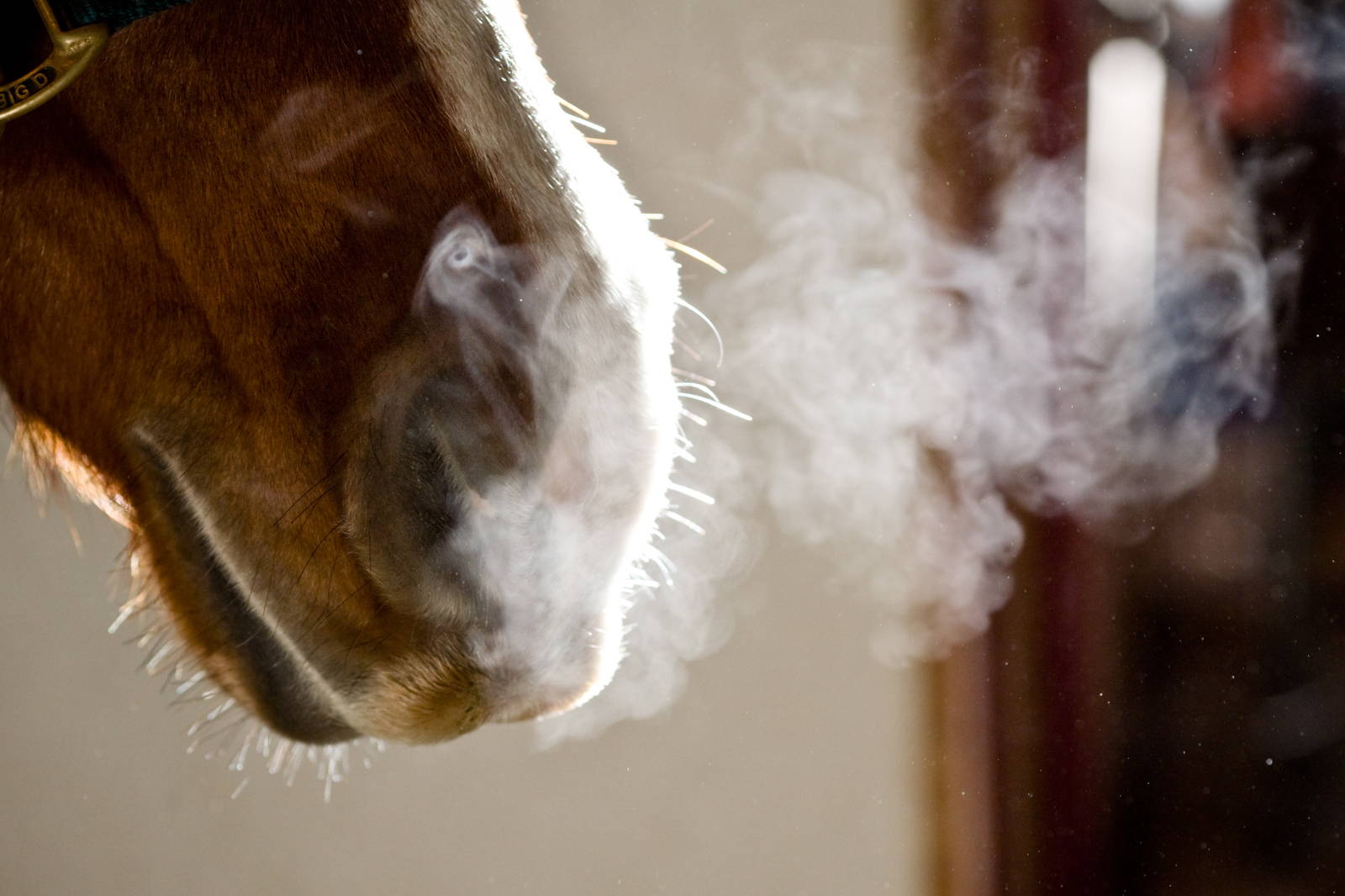New study confirms that air pollution harms horses, too.
"I was worried that horses were suffering the same lung problems that I was in the summer," explains Dr. Janet Beeler-Marfisi of the catalyst for recent research on the impact of air pollution on horses. The University of Guelph Ontario Veterinary College researcher is a lifelong horse enthusiast who suffers from asthma. "I pay attention to the Air Quality Health Index because I know that I am more prone to asthma attacks or if I exert myself when the AQHI is high."
It made sense that horses could also experience the same problems, but there was little research to corroborate this. It also made sense that exposure to air pollution could contribute to the development of lower airway inflammation. This air pollution mainly comes from cars, and some horses exercise near highways and cities with lots of cars.
"Every summer, we get waves of horses with respiratory issues. Although many of them appear to be related to viral infections or allergies, there was very little out there on lung inflammation in relation to air pollution," she states. "I wondered if air pollution, which we used to call smog, could be a contributing factor to lung inflammation, as it is in humans with asthma?"
Confirming a Correlation

Dr. Beeler-Marfisi's wonderings led to research confirming her concerns about a correlation between air pollution and lung inflammation in horses. Indeed, increased temperature and specific types of particulate matter that cause smog, were associated with increased numbers of inflammatory cells, called granulocytes, in the lungs of horses, concluded the 2020 project.
There are protective cells that normally exist in the air sacs of the lung. Dr. Beeler-Marfisi describes them as "soldiers protecting the lungs from things that are breathed in and that could cause illness." Harmless particles are dismissed by the protective cells, but harmful particles alert the protective cells to call for back-up in the form of granulocytes that protect the body from intruders. These increased granulocytes are one way we recognize lung inflammation in horses. And the accumulation of these inflammatory cells can reduce the transfer of oxygen from the lungs into the bloodstream. This restricted oxygen supply negatively affects the horse’s athletic ability. "The lungs are so important to the function of an equine athlete, even the slightest bit of inflammation can lead to decreased performance."
The Study
To determine the correlation between bad air quality and equine lung health, Dr. Beeler-Marfisi drew on data from horses referred for respiratory tract evaluation. The data included lung wash fluid cell preparations from 154 horses. They were collected over a 10-year period, from 2007-2017, and from horses living in the areas surrounding the cities of Guelph and Kitchener-Waterloo in Ontario, Canada. In 78 of 154 cases, there were increased numbers of granulocytes indicating lung inflammation when air pollution was high.
Practical Applications
Horse owners should be familiar with their local Air Quality Health Index and adjust their horse's outdoor time and exertion levels accordingly. Owners in the Western United States have become sadly familiar with these indexes as recent years' wildfires leave dangerous inhalable irritants in their wake long after the embers are out.
Cars and traffic and industrial activity contribute to poor air quality. In these areas, looking at the daily and weekly AQHI should be as routine as looking at the rest of the weather forecast when planning equine activity.
Beyond relocating to areas with cleaner air and modifying activity to align with daily air quality, much can be done in the horse's immediate environment to protect and improve respiratory health.
Minimizing dust in the stable, especially in the horse's breathing zone, is critical. Sprinkling water in barn aisles to dampen down dust and removing swept particles out to the rubbish pile are good steps. Hay, unfortunately, is a big contributor to unhealthy air in the horse's breathing zone. Dr. Beeler-Marfisi does not recommend free feeding from round bales or large square bales. These cause the horse to submerge their nose into the bale for long periods of time where they breathe in the naturally occurring hay dusts.
Even hay of good nutrient quality is loaded with microscopic particles capable of triggering the horse's natural respiratory defense mechanisms. These can cause irritation and inflammation throughout the respiratory system. "Even good-looking hay contains mould spores and dust from the soil," Dr. Beeler-Marfisi notes. "These are just naturally occurring and can contribute to lung inflammation."
Unrelated to Dr. Beeler-Marfisi’s research, Haygain High Temperature Hay Steaming was developed to reduce those respirable particles from hay. Born of a horseman's hunch that hay was contributing to coughs and decreased respiratory function in his field hunters, Haygain has evolved with extensive research on its ability to reduce up to 99% of the dust, mould, bacteria and other allergens commonly found in hay. High Temperature Hay Steaming is now widely accepted as an effective means of controlling the controllable aspects of a horse's environment for peak respiratory health.
The study led by Dr. Beeler-Marfisi can be found in its entirety here




















